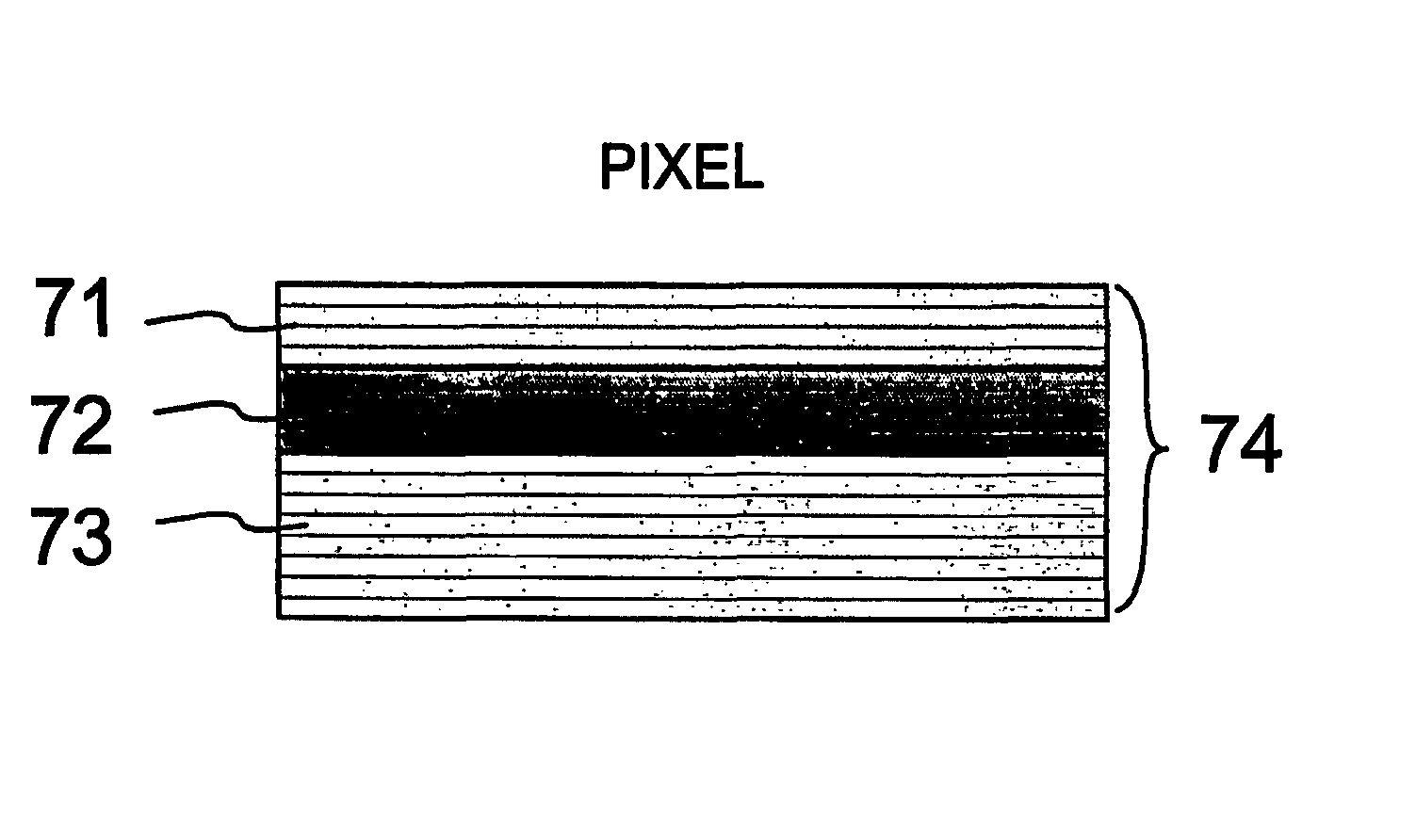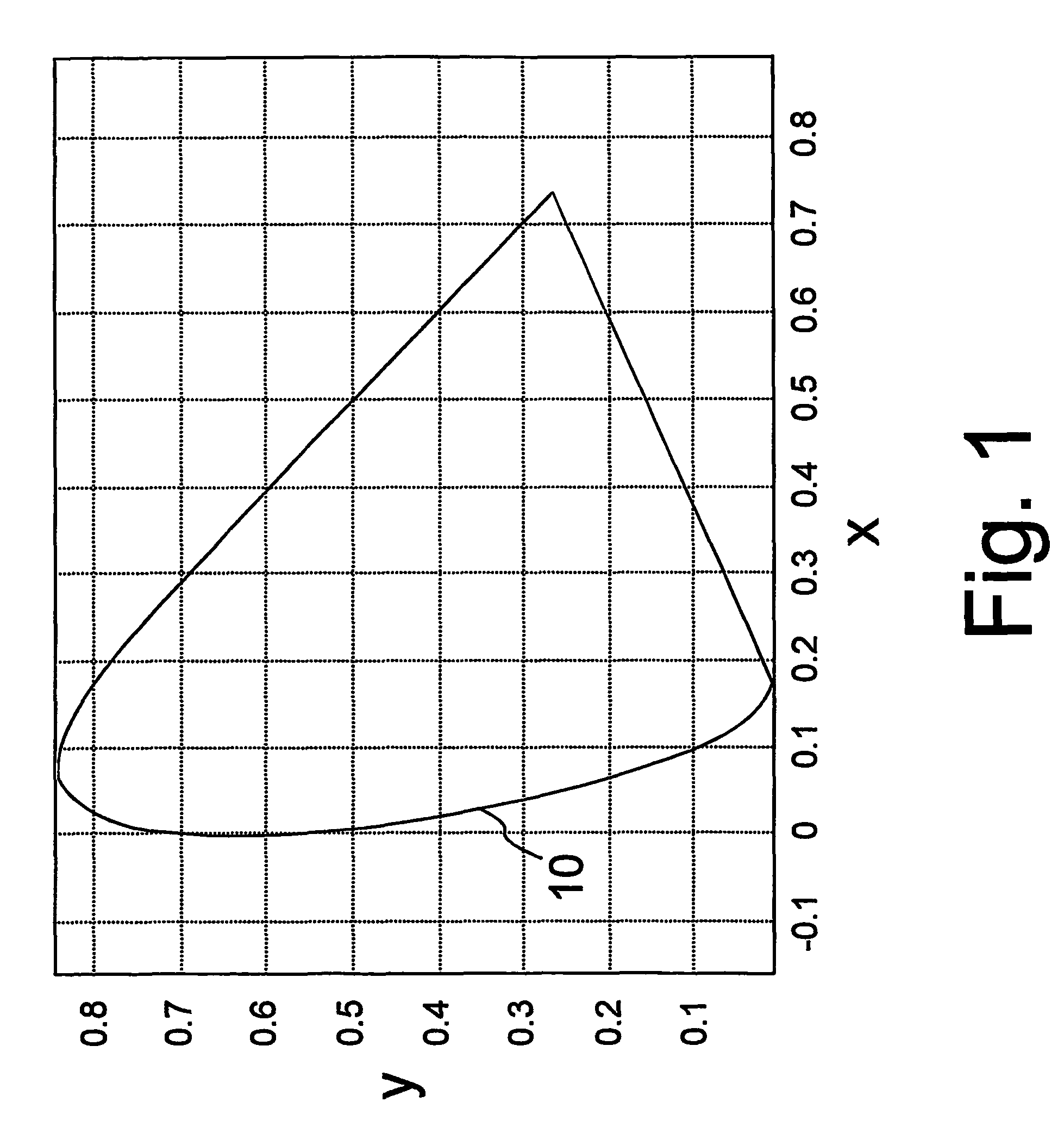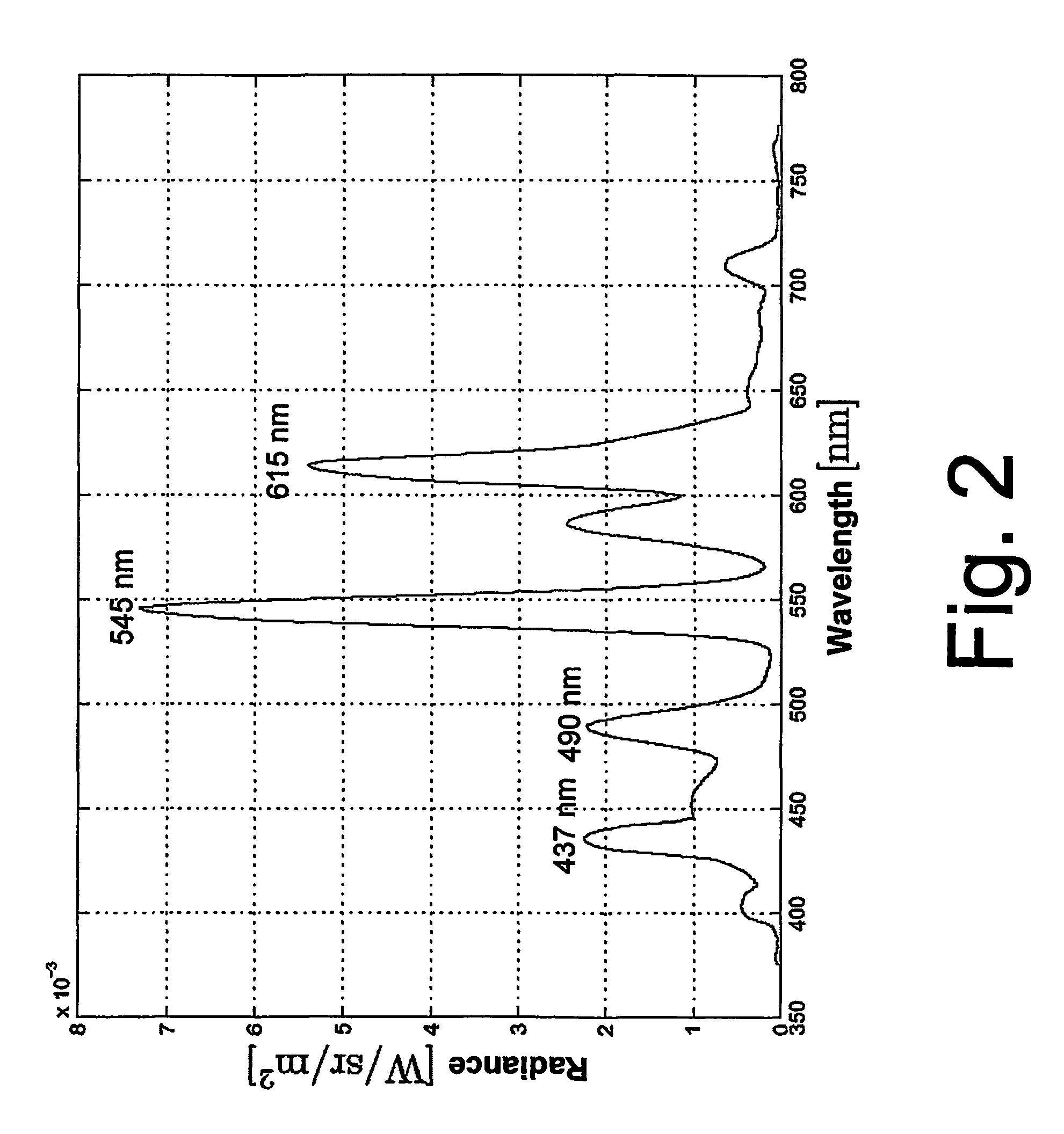Diffractive color system
a color system and diffractive technology, applied in the field of diffractive color systems, can solve the problems of not using light-absorption-based mixing on printed matter, complicating the production of product copies, and the color spectrum implemented through it is still too limited to meet the present and ever-growing needs of product designers, for example, to achieve accurate production and wide color spectrum
- Summary
- Abstract
- Description
- Claims
- Application Information
AI Technical Summary
Benefits of technology
Problems solved by technology
Method used
Image
Examples
Embodiment Construction
[0039]In the following the invention is described more in detail by using as an example mainly the selection of primary color candidates for fluorescent illumination. In a corresponding manner, the selection of primary colors can also be implemented for other light sources comprising a discrete spectrum, which light source can be formed, for example, by an illuminating apparatus assembled of light diodes having different colors. The optimization of the luminance of the color effect is also described more in detail by means of examples. In addition, the implementation of elementary gratings is described more in detail, as well as how a certain color of the color coordinate system is coded into area ratios of a basic area unit formed of the elementary gratings. Finally, the color system according to the invention is described, as well as advantages attainable by it.
On the Concept of the Color Coordinate System
[0040]FIG. 1 shows, in principle, the calorimetric color coordinate system s...
PUM
 Login to View More
Login to View More Abstract
Description
Claims
Application Information
 Login to View More
Login to View More - R&D
- Intellectual Property
- Life Sciences
- Materials
- Tech Scout
- Unparalleled Data Quality
- Higher Quality Content
- 60% Fewer Hallucinations
Browse by: Latest US Patents, China's latest patents, Technical Efficacy Thesaurus, Application Domain, Technology Topic, Popular Technical Reports.
© 2025 PatSnap. All rights reserved.Legal|Privacy policy|Modern Slavery Act Transparency Statement|Sitemap|About US| Contact US: help@patsnap.com



